I am creating layered MVC Application that contains.
model layer: which is not using any reference for EF
Data Layer: which contains the infrastructure. (Repositories and unit of work ) and this layer referenced with Entity framework
Service layer
Web layer.
I am using Asp.net identity2. What I am doing is using ApplicationUser class in model layer and this leads me to reference model layer to Entity framework and Microsoft.AspNet.Identity.EntityFramework.
i am asking if there is a better way to do it, especially in feel that I am repeating my self while making both data layer and model layer using a reference to entity framework?
